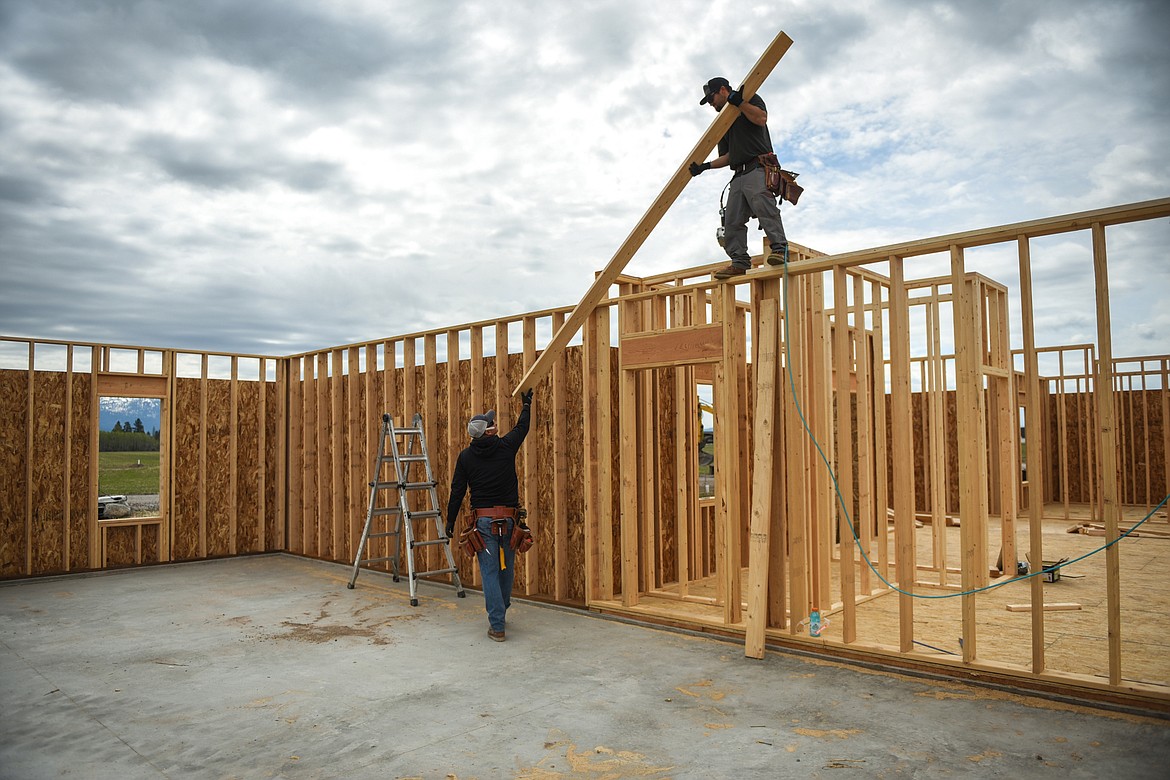Housing costs emerge as key to Montana's labor shortage
HELENA (AP) — Montana's economy has largely healed from the effects of the coronavirus pandemic but is facing a labor shortage fueled partly by a lack of affordable housing, economists said Wednesday.
A commission tasked with distributing part of the $900 million in federal coronavirus relief that Montana received has named affordable housing as one of four categories it will consider for funding proposals. The others are business innovation, value-added agriculture and workforce development. The commission will meet again in three weeks to discuss proposals from the public.
With housing values increasing by well over 20% in the past year in parts of the state, some workers are saying they can't take low-paying jobs even with recent wage hikes, said Mike Foster, director of the state's program for distributing coronavirus relief funds.
While Republican Gov. Greg Gianforte's office is open to funding affordable housing, Foster said it's "a tricky challenge because we want to be respectful of the free market."
Judy Stinchcombe, a vacation property company owner in Paradise Valley, told the commission that she has struggled to find workers in the popular destination near Yellowstone National Park. She said she would like to build 14 two-bedroom cottages to house her employees and asked commissioners to consider providing funds for employee housing.
Several people spoke in favor of allocating money to for-profit affordable housing developers, saying such projects are difficult to fund.
Pat Barkey, an economist at the University of Montana, told the commission that the economy looked better but two problems remain: businesses are struggling to fill open positions, and it's difficult for workers to find affordable housing.
He said wages in the first quarter of this year are 20% higher than they were in the first quarter of 2020.
Barbara Wagner, chief economist of Montana's labor department, said it's difficult to fill positions because the workforce is still down more than 5,000 workers compared with pre-pandemic levels. That's despite a relatively strong economy that is beckoning workers back to the job with higher wages and readily available COVID-19 vaccines, she said.
Montana's labor force participation saw a sharp decline at the start of the pandemic but quickly recovered to eclipse pre-pandemic levels in May 2020. Since then, it's declined steadily but experienced small increases in May and June.
Wagner said the drop also can be attributed in part to a lack of affordable child care — a problem Gianforte is seeking to address by sending more than $30 million in relief funding to child care facilities to hire more staff.
More than 50,000 parents in Montana have reduced their working hours since the pandemic began, according to data collected by the labor department.
The commission also approved Wednesday a homeowner assistance fund that would provide loans to homeowners struggling financially to meet mortgage payments, despite pushback from Democratic lawmakers on the committee who called for financial assistance to be provided in the form of grants rather than loans.
The program will provide loans of up to $25,000 to homeowners at risk of mortgage delinquencies with a 10-year maximum term with no interest.
"I don't understand why we're having folks take out another loan when it sounds like we could just make them whole and let them get a fresh start," Democratic Minority Leader Rep. Kim Abbott said.
In another step to address the labor shortage, Montana ended its participation in expanded federal unemployment benefits last month. It launched a return-to-work incentive program that could give workers $1,200 if they find and keep a job for at least a month.
The state released figures from the program for the first time this week, revealing that $76,000 has gone to 65 recipients so far. Of those, 27 were hired for jobs paying $15 or less per hour. The state is processing more than 3,000 other applications.


